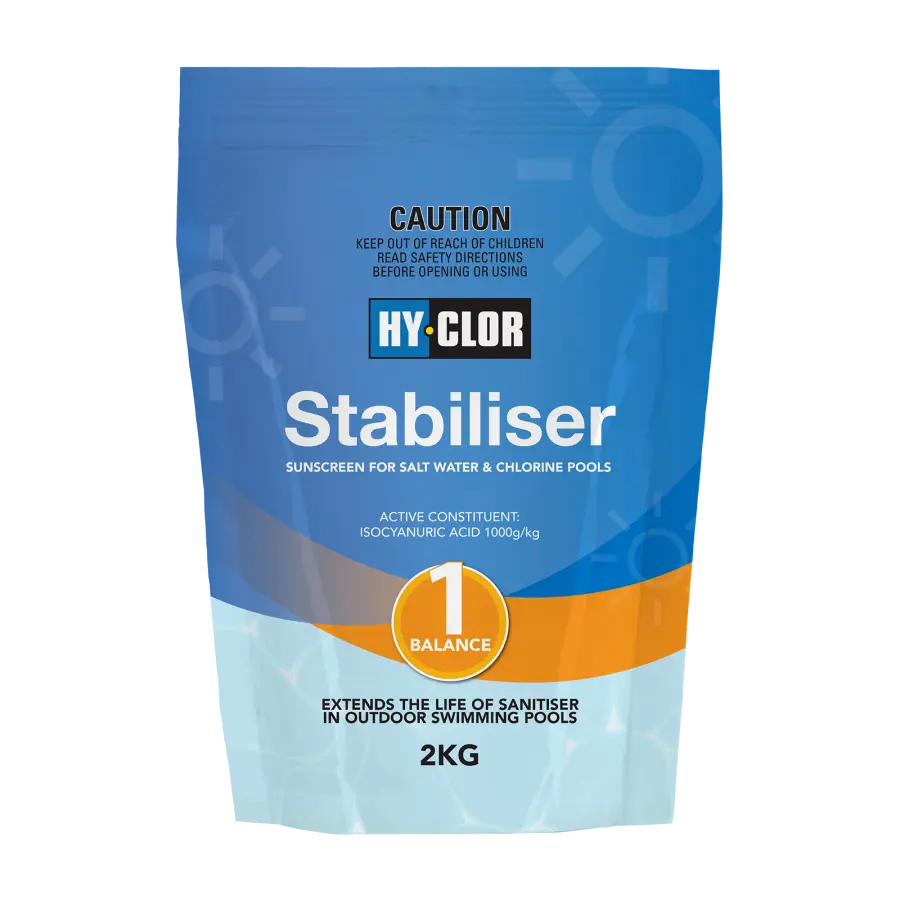
Cyanuric Acid

Cyanuric Acid is used to stabilize chlorine in swimming pools.
Cyanuric Acid, also known as Sunblock or Stabilizer, helps protect chlorine from being broken down by UV rays from the sun in outdoor pools.
The Complete Guide to Cyanuric Acid: The Right Amount, Usage, and Safety in Pool Maintenance
Introduction
Cyanuric Acid (CYA), commonly known as stabilizer or conditioner, plays a crucial role in maintaining chlorine levels in swimming pools. It protects chlorine from sunlight degradation, ensuring that pool water remains safe and clean. Proper usage of CYA is critical to maintaining pool water quality, especially in outdoor pools exposed to UV rays.
What is Cyanuric Acid and Why is it Important?
Cyanuric Acid (CYA) is a chemical compound used in outdoor pool maintenance to stabilize chlorine. Its primary role is to protect chlorine from UV degradation caused by sunlight. Without CYA, chlorine in outdoor pools can dissipate rapidly, rendering it ineffective. CYA acts as a "sunscreen" for chlorine, allowing it to remain active in the water for longer periods.
Correct Amount of Cyanuric Acid to Use
The ideal concentration of Cyanuric Acid in a pool depends on the pool type and usage. For most outdoor pools, the recommended CYA level is 30-50 ppm. This range provides adequate protection against UV degradation without compromising chlorine effectiveness.
- Measuring CYA Levels: Use a reliable pool test kit to measure CYA levels accurately. Test strips or liquid test kits are commonly used for this purpose.
- Adjusting CYA: If CYA levels are too low, add a stabilizer product to increase them. If levels are too high, partially draining and refilling the pool is often the only solution.
Indoor vs Outdoor Pools: The Role of CYA
The usage of Cyanuric Acid varies significantly between indoor and outdoor pools:
- Indoor Pools: Typically do not require CYA due to the lack of UV exposure. Chlorine in indoor pools remains stable without the need for a stabilizer.
- Outdoor Pools: Benefit from CYA as it prevents chlorine loss from sunlight. Without CYA, chlorine in outdoor pools can degrade rapidly, leading to ineffective sanitation.
CYA should only be used in outdoor pools where UV exposure is a concern.
Sun Exposure, Shade, and Their Impact on CYA
Sunlight rapidly breaks down chlorine in outdoor pools, making CYA essential for maintaining chlorine levels. However, the amount of sun exposure and shading can influence the need for CYA:
- Sun Exposure: Pools exposed to direct sunlight require higher CYA levels to protect chlorine from UV degradation.
- Shade: Pools in shaded areas may require less CYA, as reduced UV exposure slows chlorine degradation.
Why CYA Should Only Be Used in Outdoor Pools
Cyanuric Acid is unnecessary and potentially harmful in indoor pools:
- No UV Exposure: The absence of direct sunlight indoors means that chlorine doesn’t degrade as quickly, eliminating the need for a stabilizer.
- Excessive Buildup: Using CYA in indoor pools can lead to excessive buildup, affecting the chemical balance of the pool water and making it harder to maintain proper chlorine levels.
Dangers of Letting CYA Levels Get Too High
High CYA levels can lead to several issues in pool maintenance:
- Chlorine Inefficiency: High CYA levels can cause chlorine to become less effective, leading to poor sanitation.
- Algae and Bacteria Growth: Excessive CYA, combined with insufficient chlorine, creates an environment conducive to algae and bacteria growth.
- Difficulty Adjusting Chlorine Levels: High CYA levels make it harder to maintain the right chlorine levels, leading to unsafe pool conditions.
The Association Between Cyanuric Acid and Chlorine
Cyanuric Acid works in tandem with chlorine to protect pool water. The relationship between CYA and chlorine affects overall pool chemistry and sanitization efficiency:
- CYA-Chlorine Ratio: Maintaining the correct ratio is essential for effective pool sanitation. Too much CYA can lead to "chlorine lock," where chlorine becomes ineffective despite high concentrations.
- Chlorine Protection: CYA binds to free chlorine molecules, shielding them from UV degradation and ensuring consistent sanitation.
How to Lower and Raise CYA Levels
Adjusting CYA levels is a critical part of pool maintenance:
- Raising CYA: Add stabilizer to the pool water using CYA-based products like stabilizer or conditioner. Follow the manufacturer’s instructions for proper dosage.
- Lowering CYA: The most effective method is dilution by partial water replacement. There are no quick fixes for lowering CYA once it is too high, so gradual reduction is key.
Conclusion
Maintaining optimal Cyanuric Acid levels is essential for pool safety and hygiene. Proper pool care involves understanding and monitoring the delicate balance of CYA and chlorine. By following the guidelines outlined in this article, pool owners can ensure their pool remains clean, safe, and enjoyable for swimmers.
Bonus Tips and Resources
- Test Regularly: Use a reliable pool test kit to monitor CYA and chlorine levels at least twice a week.
- Shock the Pool: Regularly shock the pool to break down chloramines and restore free chlorine levels.
- Consult Pool Industry Guidelines: Refer to trusted resources for detailed pool maintenance recommendations.